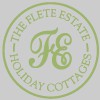
The Flete Estate in South Devon is the most spectacular setting for a holiday by the sea. It is designated an Area of Outstanding Natural Beauty, Heritage coast and Site of Special Scientific Interest and is alive with wonderful wild flowers, birds and animals. The self catering cottages include a mill cottage, a row of coastguards cottages right above the beach, a gamekeeper's cottage in the woods, and a Grade 11 listed house sleeping 18, and all welcome dogs.
Most are within 10 minutes walk of the unspoilt Erme estuary, with its sandy beaches, gentle surf, and the South West Coastal footpath. You can enjoy walking, bird watching, fishing, star gazing, photography or messing about in boats, without even leaving the Estate.
Most are within 10 minutes walk of the unspoilt Erme estuary, with its sandy beaches, gentle surf, and the South West Coastal footpath. You can enjoy walking, bird watching, fishing, star gazing, photography or messing about in boats, without even leaving the Estate.
Services
Glamping
Report
The tents are pitched in a nine-acre field just 5 minutes walk from the secluded Pamflete Beach.
They all have the use of three hot showers, two compost loos and a cool kitchen housed in a horsebox, where there are four gas hobs and cool boxes with ice packs for each tent.
Each tent will have its own BBQ and fire pit and inside, the tents have been kitted out with double beds, blankets and hot water bottles for comfort, and have a touch of flair in the decoration thanks to the Canopy and Stars decoration team.
They all have the use of three hot showers, two compost loos and a cool kitchen housed in a horsebox, where there are four gas hobs and cool boxes with ice packs for each tent.
Each tent will have its own BBQ and fire pit and inside, the tents have been kitted out with double beds, blankets and hot water bottles for comfort, and have a touch of flair in the decoration thanks to the Canopy and Stars decoration team.
Mothecombe Gardens – A History
Report
Mothecombe House was built in 1710 and originally had little in the way of a formal garden apart from the walled garden in front of the house.
A farm track ran through the cider orchard and woods to the beach.
Mothecombe House and farm was bought 1873 by Henry Mildmay whose father-in-law John Crocker Bulteel had owned the nearby Flete Estate.
He enclosed walled gardens for growing vegetables and flowers for the house.
He also improved the path to the beach and planted tree rhododendrons in the woodlands.
A farm track ran through the cider orchard and woods to the beach.
Mothecombe House and farm was bought 1873 by Henry Mildmay whose father-in-law John Crocker Bulteel had owned the nearby Flete Estate.
He enclosed walled gardens for growing vegetables and flowers for the house.
He also improved the path to the beach and planted tree rhododendrons in the woodlands.
Bee Garden
Report
For many years, the gardens at Mothecombe House have been managed with consideration for the needs of wildlife.
Following publication of Professor Dave Goulson's book "A Sting in The Tail" in 2013, a new awareness of the threats to bumble bees focused our attention on them in particular.
Within what is now the Bee Garden, two hundred and fifty lavender plants of twelve varieties replaced rows of showy flowers and old fruit bushes, and form the backbone of the planting, supplemented by bulbs, annuals and perennials.
Following publication of Professor Dave Goulson's book "A Sting in The Tail" in 2013, a new awareness of the threats to bumble bees focused our attention on them in particular.
Within what is now the Bee Garden, two hundred and fifty lavender plants of twelve varieties replaced rows of showy flowers and old fruit bushes, and form the backbone of the planting, supplemented by bulbs, annuals and perennials.
Walled Garden
Report
The earliest records for the walled garden are in 1925 when Sir Edwin Lutyens remodelled the Victorian terrace, adding the vertical slate surface, slate capped wall and troughs of Agapanthus at each end.
However, the footprint of the garden is visable on the 1834 Tithe map and is assumed to be contemporary with the 1710 house.
There are no records of plantings from this time, but in 1980 borders were still mainly planted with showy plants for maximum impact in August when the house was filled with guests.
However, the footprint of the garden is visable on the 1834 Tithe map and is assumed to be contemporary with the 1710 house.
There are no records of plantings from this time, but in 1980 borders were still mainly planted with showy plants for maximum impact in August when the house was filled with guests.
Wildflower Meadows
Report
In 2020, we decided to manage Colts' field next to the garden as a natural wildflower meadow.
Until 2019 it had been used for many years to graze horses, with an annual visit by sheep to crop the grass short when the horses moved to fresh pastures.
In 2019-2020 it was grazed by sheep until March and then allowed to grow.
At the end of June, a representative from Plant Life assisted with an audit of the grasses and flowers already flourishing in the field, and found forty-eight different wildflowers and twelve different grasses.
Until 2019 it had been used for many years to graze horses, with an annual visit by sheep to crop the grass short when the horses moved to fresh pastures.
In 2019-2020 it was grazed by sheep until March and then allowed to grow.
At the end of June, a representative from Plant Life assisted with an audit of the grasses and flowers already flourishing in the field, and found forty-eight different wildflowers and twelve different grasses.
Reviews

Be the first to review The Flete Estate Holiday Cottages.
Write a Review

